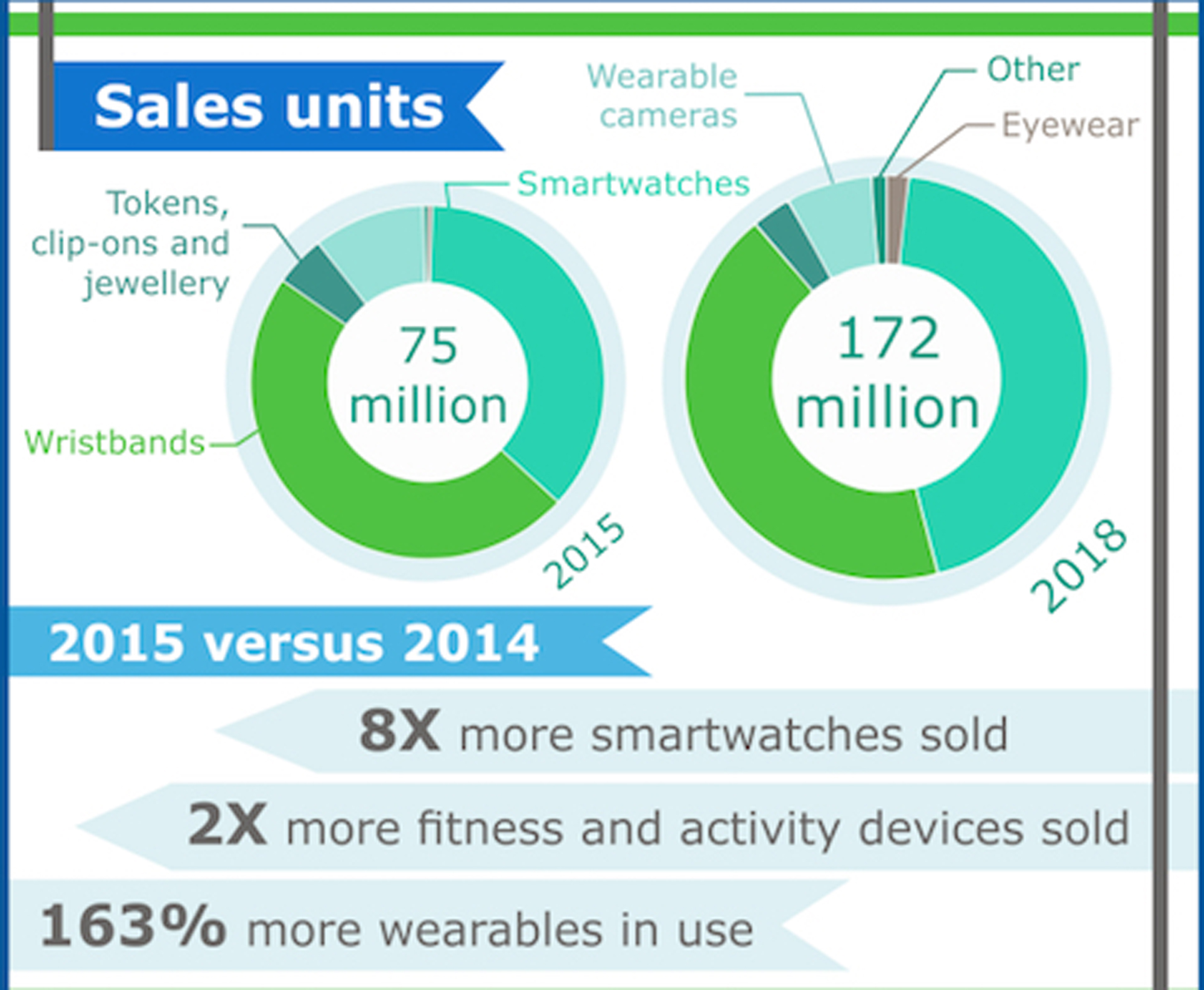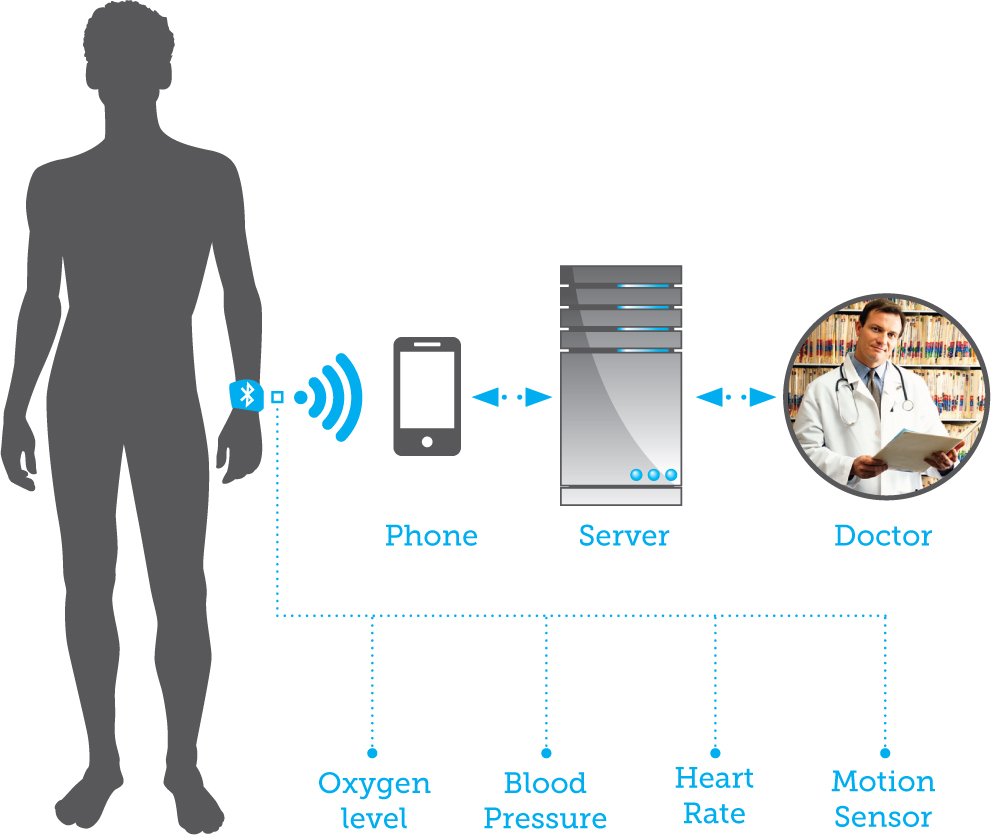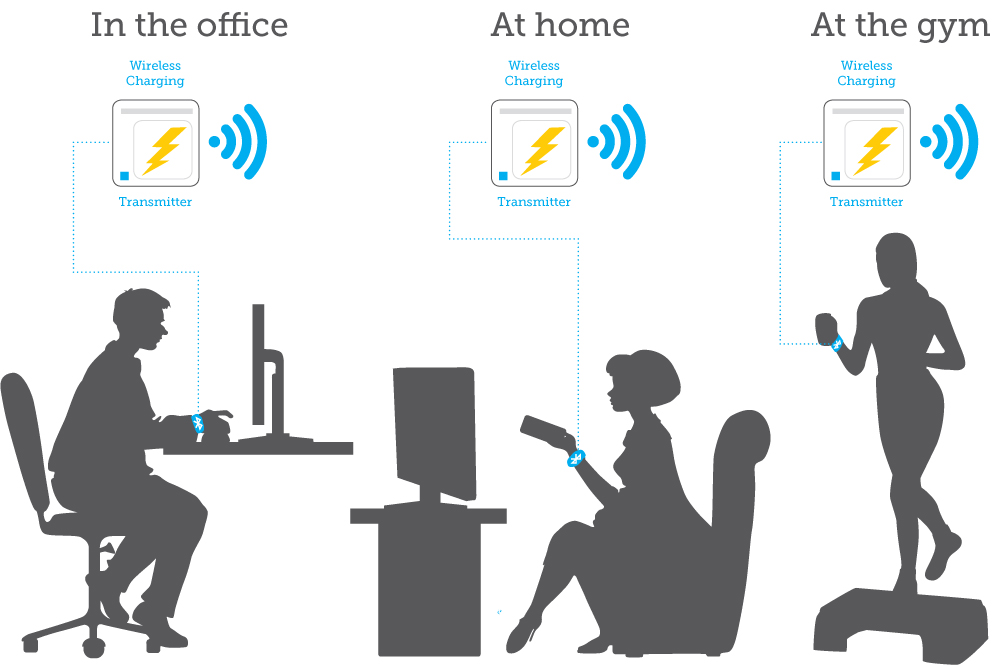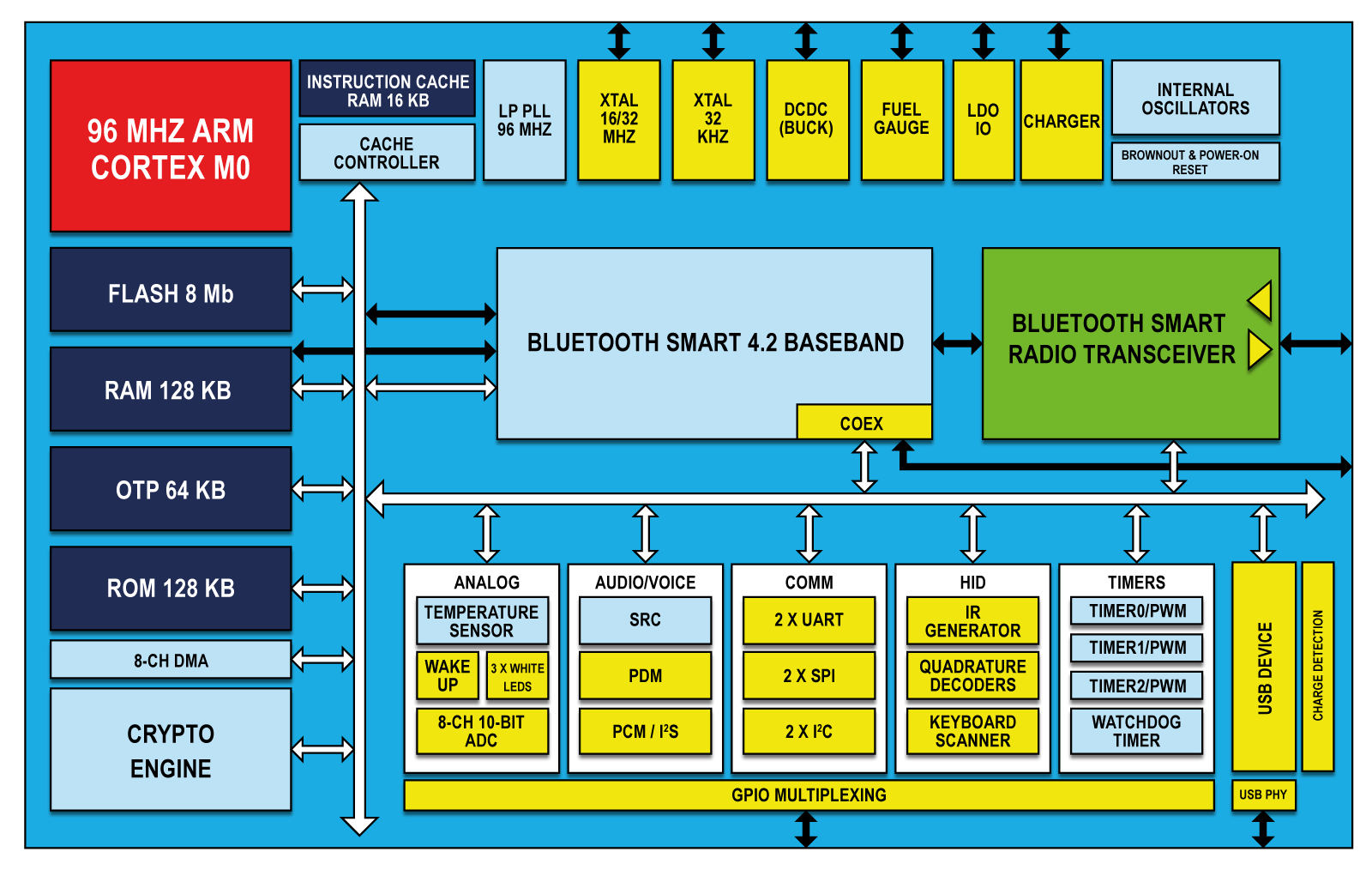The Third Generation of Wearables
Advances in sensor technology, integration and power management are enabling the future of wearable technology. By Mark de Clercq, Product Marketing Group Manager at Dialog Semiconductor
The idea of a ‘guardian angel’ monitoring our activity and health is already gaining popularity, as the number of wearable heath monitors and smart devices in use continues to see rapid growth. According to market analyst CCS Insight, the number of devices sold in the ‘wearable’ category increased six-fold in the two years leading up to 2015, and is expected to grow again at almost the same rate in the next three; to reach over 170 million units by 2018 (Figure 1).
 Figure 1: Wearables are the fastest growing segment of the Internet-of-Things
(Source: CCS Insight)
Figure 1: Wearables are the fastest growing segment of the Internet-of-Things
(Source: CCS Insight)
So what’s driving this growth? In part, it is the benefits they bring to health-conscious individuals, but future growth could be attributed to more diverse use-cases. The quality of the data gathered is now reaching a level that could be used by medical professionals; the convenience of gathering data unobtrusively is also key, but perhaps the real benefits have yet to be fully realised. Continued innovation in the enabling technologies such as sensors, communications and ultra-low power operation are converging on the wearable device, promising the best is yet to come.
Integration
The industry consensus is that the wearable market is evolving and it is the ‘third-generation’ of devices that will attract larger numbers of users, for a number of reasons. The apparent intelligence of these devices will allow them to adapt their operating modes based on their location, activity or general context. This, in turn, will be enabled through the use of more capable sensors, producing a greater amount of useful data. Already the wearable device has evolved from a simple device based on a motion sensor (typically three-dimensional accelerometers), to something that integrates pressure sensors, gyroscopes and other sensors to help the device determine the kind of activity being undertaken, such as hiking, running, cycling or swimming (Figure 2). This trend has continued to include temperature sensors, humidity detectors and, increasingly, heart rate monitors, delivering a fuller picture of vital statistics during a wider range of activities. In the near future we can expect more biosensors in our wearable devices, allowing a long list of physical parameters to be measured and recorded throughout the day and night.
 Figure 2: We’re about to see a growing range of biosensors integrated into wearables.
Figure 2: We’re about to see a growing range of biosensors integrated into wearables.
Another likely development is the adoption of audio and visual sensors to provide greater context awareness. If a microphone detects background noise associated with travel, it may put the device in to a mode to monitor drowsiness, for example, or the lack of ambient light may suggest a sleep mode is appropriate.
This scenario of continuous monitoring raises an important and crucial consideration; power consumption. Most market data agrees that the usable time between recharging is a key-influencing factor for consumers when purchasing portable devices; because of the need for continuous use, wearables will need to exceed consumer expectations when it comes to battery lifetime. This means that in addition to integrating more sensors and functionality, third-generation wearable devices need to function for many days between charges.
For this reason, manufacturers are looking at new and innovative ways to supplement the battery power and even help charge wearable devices, such as energy harvesting or wireless charging (Figure 3).
 Figure 3: Loosely coupled wireless charging could support the development of wearables you need never take off
Figure 3: Loosely coupled wireless charging could support the development of wearables you need never take off
Both these technologies are developing almost as rapidly as the wearables market; the former employs techniques including photovoltaics, thermoelectric and vibrational generators to deliver small but usable levels of energy, while the latter scavenges the energy present in background or directed RF waves and reconverts it in to electricity. Both fields show promising results and may, in the future, play an important role in the wearables market. But today the most likely solution will remain rechargeable electro-chemical batteries which, although need to be charged, offer the only feasible energy densities needed for small, wearable devices that employ some form of wireless connectivity.
Security
With consumer expectation already high, the third generation of wearable devices will need to integrate even more seamlessly into everyday life, specifically when it comes to making use of the data they collect. This has been — and will remain — the definitive use-case for wireless connectivity; even if it remains necessary to take a wearable device off and place it on, in or near a platform to recharge it, users will draw the line at doing that just to upload their data.
By far, the most widely deployed wireless technology in wearable devices today is Bluetooth, specifically the latest Low Energy variant. As with other examples of open standard wireless protocols, security is integral to the Bluetooth specification and the latest version (4.2) improves on this. However, as wearable devices move from motion trackers to medical monitors, the need for greater security will grow. Manufacturers and consumers will demand the most secure solution when it comes to sharing sensitive medical data, which is why Dialog has included encryption technology in its solutions targeting wearable technology; ensuring that, even if the wireless link is hacked, the data remains secure.
Form Factors
As the third generation of wearables emerges, consumers will have access to an increasingly diverse array of devices, and while the wrist will remain the natural ‘home’ for devices, any part of the body will become viable ‘real estate’. Provided, that is, that the devices are small and light enough to be worn unobtrusively. As the level of integration goes up, making devices smaller and lighter will be a challenge for manufactures, but silicon providers are aware of this and are already forging ahead with new and appropriate solutions. An example is Dialog’s SmartBond DA14680 (Figure 4), which is the first in a number of devices intended to meet the needs of the wearable market. This multifunction System-on-Chip integrates Bluetooth connectivity with a powerful yet power-frugal Applications Processor, along with the necessary features to create a full wearables sensor hub. It also integrates power management hardware, removing the need for an external DC/DC converter or battery charging circuitry. As such, it removes the need for the majority of external components that many SoCs require, allowing manufacturers to create even smaller wearable devices.
 Figure 4: Dialog’s SmartBond DA14680 is a “wearable-on-chip” SoC which, with the addition of sensors, a power source and a few external components, can be used to create wearable computing devices quickly and reliably
Figure 4: Dialog’s SmartBond DA14680 is a “wearable-on-chip” SoC which, with the addition of sensors, a power source and a few external components, can be used to create wearable computing devices quickly and reliably
Multi-function, multi-sensor and even multi-standard wearable devices are going to play an increasingly common and important role in everyday life. Just as the Internet of Things will bring automation to many commonplace tasks, wearable devices will not only monitor our physical wellbeing but will blend seamlessly in to our lives, providing a link to the IoT and beyond. Wearable devices will allow us to manipulate our surroundings, as well as enable our surroundings to adapt to our immediate needs. They will provide a crucial element in healthcare and ongoing treatment, and ultimately perform routine medical administration for assisted living.
This will all be enabled by greater integration and more intelligence, delivered through innovation and the development of ultra low power integrated devices. Sensors, processing and power management are coming together in ever-smaller packages to provide even greater functionality, and at the heart of it will be advanced SoC technology from leading semiconductor vendors. The future of wearable technology is going to see unprecedented growth and evolution in the next few short years, and we’re all invited along for the ride.











